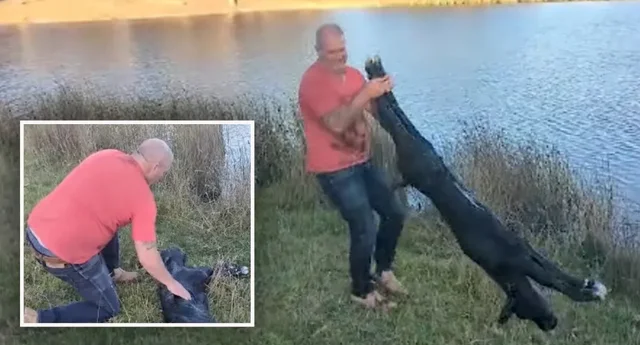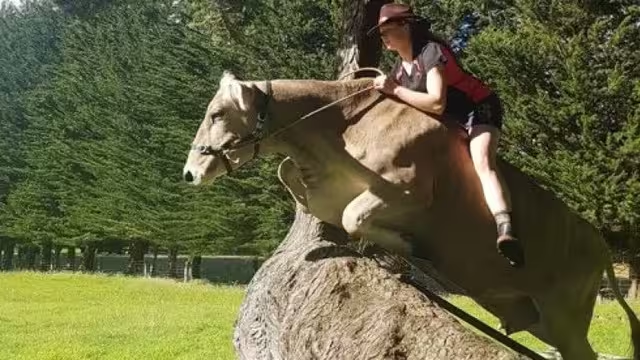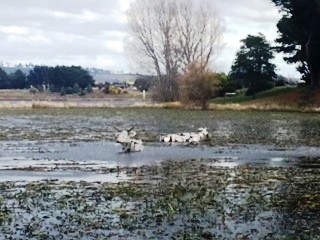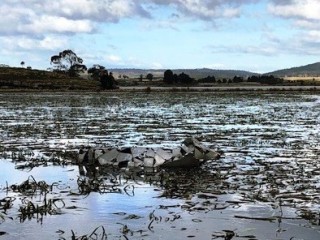Hero farmer's incredible technique saves baby cow that wasn't breathing when it was accidentally born underwater in a dam on his property in South Australia.
Bryan Littlely was roaming his 100-acre property in Back Valley, South Australia when he noticed one of his cows in distress while giving birth, and knew it needed help — but it was his interesting technique that found him internet fame in the days that followed.
Explaining how it unfolded, the farmer told Yahoo News Australia he first noticed the troubled animal on a drone that he'd been flying overhead. Wasting no time, he and his wife rushed up the hill to where the struggling cow was birthing and attempted to pull the calf out by its legs.
During the troubling ordeal, the mother "got up and took off" straight into the nearby dam. Eventually, the calf slipped out but dropped about a metre underwater, meaning it was unable to take its first breaths.
"The first thing we did was once I managed to get to it was pick it up and give it a whizzy. I thought it was dead to be honest," Littlely said. "The calf had pretty much been trapped for a few hours. So it was really touch and go."

[/URL]
Farmer Bryan Littlely leapt into action with the 'whizzy' technique to save the baby cow.
During the troubling ordeal, the mother "got up and took off" straight into the nearby dam. Eventually, the calf slipped out but dropped about a metre underwater, meaning it was unable to take its first breaths.
"The first thing we did was once I managed to get to it was pick it up and give it a whizzy. I thought it was dead to be honest," Littlely said. "The calf had pretty much been trapped for a few hours. So it was really touch and go."
A "whizzy" refers to an old farming technique which involves holding the animal by its legs and swinging it around in circles. Littlely learned it from his father, who was also a farmer, and said it helps to clear its airways by releasing any "gunk" or water that prohibits breathing — and in this instance, the miracle trick worked wonders.
In the video, the dad-of-one can be seen spinning the calf in circles before laying her lifeless body on the grass. He then "massaged her throat a bit" and "gave it a second whizzy". He was about to "give it a blow like CPR" he said, when suddenly the baby cow took a breath.
"You got to intervene and pull those calves out of the mums, because otherwise you lose both the mum and the calf. That's not a very nice way to go," the Aussie dad explained to Yahoo. "My wife took off to get the mum because she took off. But it took me about 4 or 5 minutes to really get the calf going again."
Littlely said he was "pretty surprised" the little one made it and said, really, "she should be dead". But thanks to the "whizzy" it wasn't.
"It's nothing new, farmers do it all the time," Littlely said of the little trick he used to save its life. But more surprising was the viral status the video earned after he shared it on Facebook on Saturday.
"There was two and a half thousand views at lunchtime on Saturday, and I thought 'that's cool'. But when I checked back a little later it'd reached 220,000 and it just took off overnight and had 1.6 million by morning," he said.
Thankfully, the "sweet little" calf, which he affectionately called Lucky Ducky, is "doing well" and is already doing laps around the paddock with her pals.

 [/URL]
[/URL]


